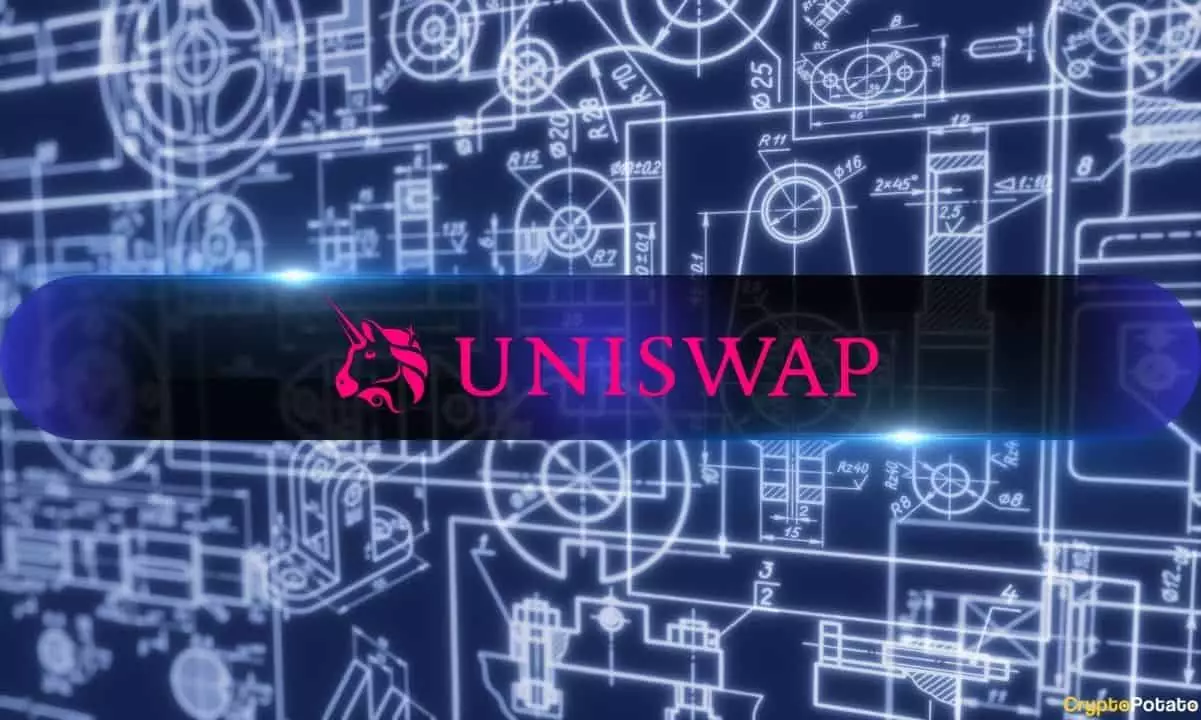In the ever-evolving landscape of decentralized finance (DeFi), Uniswap has recently caught the attention of enthusiasts and investors alike with the announcement of Unichain, its new layer-2 scaling solution for Ethereum. Launched on February 11, this endeavor signifies Uniswap’s strategic move into a highly competitive and crowded layer-2 ecosystem. As a leader in decentralized exchanges (DEX), the implications of this development could reverberate throughout the DeFi sector, with the potential to reshape not only Uniswap’s position but also the broader market dynamics.
Unichain sets itself apart with ambitious performance metrics that make it attractive to users. With the promise of one-second block times and an ambitious target of 250 milliseconds, the platform aims to deliver unmatched transaction speeds. To date, Unichain’s testnet has processed over 88 million test transactions and around 12 million test smart contracts since its rollout in October, demonstrating the platform’s scalability before its official launch.
Hayden Adams, the founder and CEO of Uniswap Labs, emphasized that “Unichain is built differently,” suggesting that the platform is designed to prioritize speed, cost-efficiency, and decentralization from the outset. This commitment to decentralization is further highlighted by their intention to launch a Validation Network later this year, enabling public participation in transaction verification. This approach not only enhances security but also embeds community engagement into its operational framework.
The functionality offered by Unichain is extensive. Users can utilize the platform for swapping tokens, providing liquidity, launching new tokens, lending and borrowing, and engaging in cross-chain trading via the ERC-7683 standard. The integration of USDC support through Circle allows for seamless transactions within the platform. Moreover, users can expect zero interface fees for swaps during the initial months, making it an appealing choice for traders seeking to minimize costs.
Another significant advantage of Unichain is its promise of substantially reduced gas fees—reportedly 95% cheaper than those on Ethereum. This drastic reduction addresses one of the primary grievances faced by users in the Ethereum network: the notoriously high transaction costs that can inhibit the usability of DApps.
Despite these strengths, Unichain is entering a market teeming with competition. Data from L2beat shows that the layer-2 ecosystem currently holds about $42.3 billion in total value locked (TVL), dominated by established players like Arbitrum One and Base. These competitors hold considerable market shares, which raises the question of how Unichain will differentiate itself within this saturated environment.
Uniswap, as the world’s largest DEX, offers Unichain a solid foundation upon which to build, but it also means that expectations are exceedingly high. The pressure to deliver reliable performance and innovative features is paramount, especially in an industry that thrives on rapid evolution and user satisfaction.
Interestingly, the announcement did not translate into significant positive movement for the Uniswap native token (UNI). Following the launch news, UNI saw a decline of approximately 6%, exacerbating a trend that has seen the token fall nearly 30% over the preceding month. With such a significant drop in value—a staggering 80% from its all-time high of nearly $45 in May 2021—there are critical questions surrounding investor confidence in both UNI and the broader DeFi sector.
This lackluster market reaction might be reflective of a broader bearish sentiment affecting DeFi-related assets. Nevertheless, Unichain might still yield positive long-term effects on the Uniswap ecosystem, especially if it successfully attracts users with its promises of lower costs and improved efficiency.
Unichain represents a bold step forward for Uniswap as it seeks to address existing blockchain challenges while fostering a more decentralized and user-friendly environment. Its success, however, will largely depend on its ability to carve out a niche amidst fierce competition and to garner meaningful adoption within the DeFi community. As the layer-2 narrative continues to evolve, it will be fascinating to observe how Unichain navigates this intricate landscape in the coming months.

